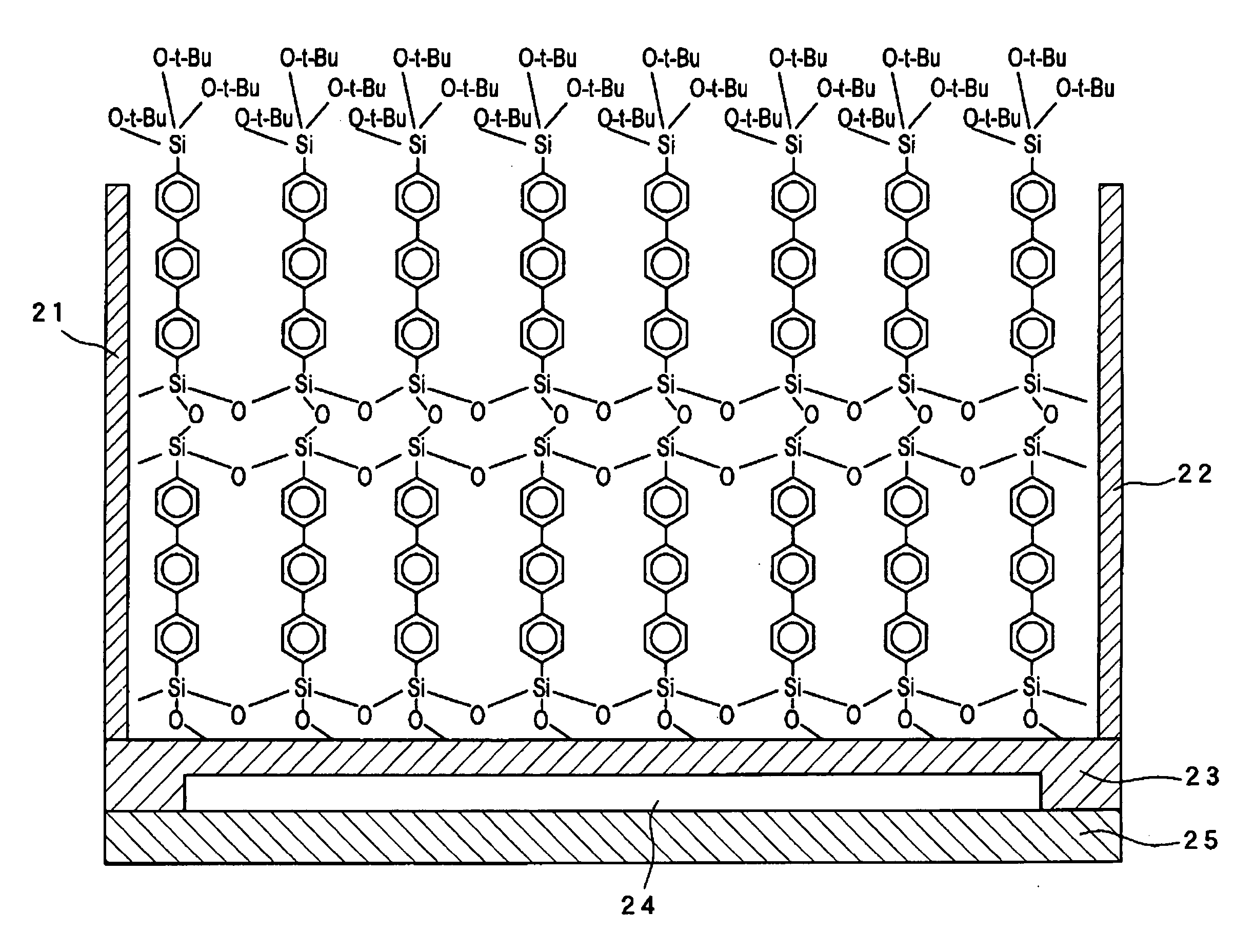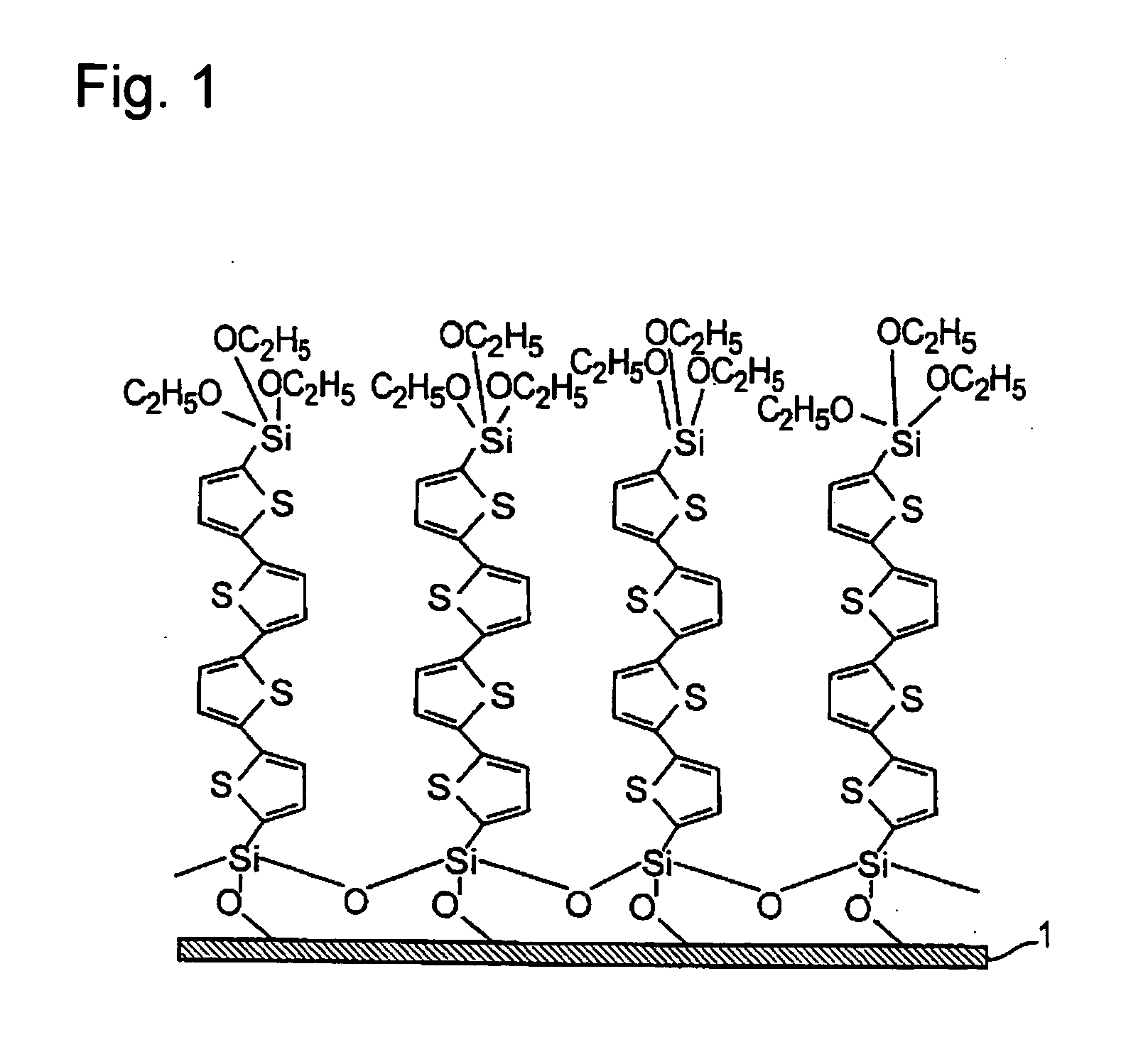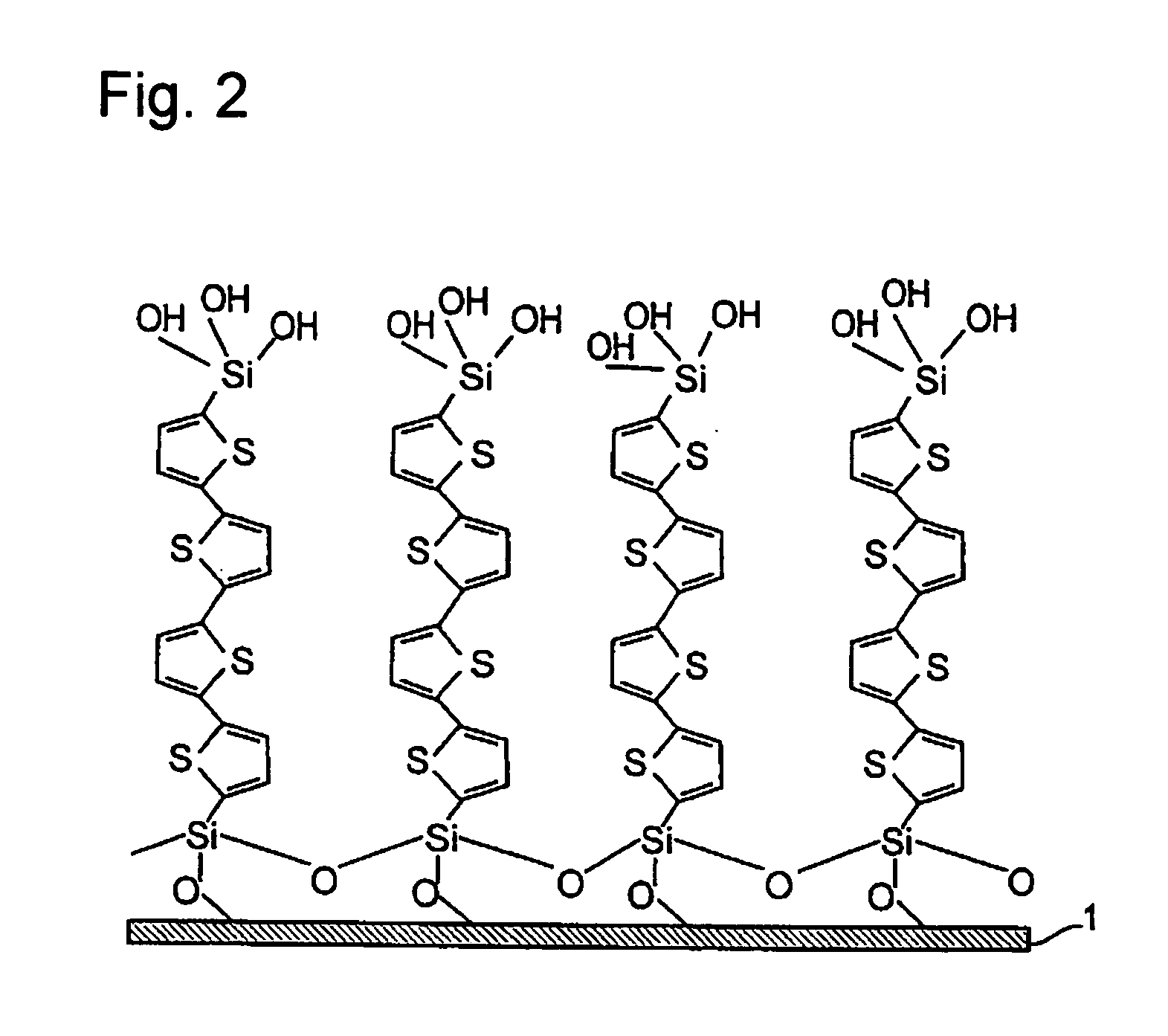Organic compound having functional groups different in elimination reactivity at both terminals, organic thin film, organic device and method of producing the same
a technology of organic compounds and functional groups, applied in the direction of organic semiconductor devices, water-setting substance layered products, instruments, etc., can solve the problems of microfabrication restriction, device properties, difficult to obtain 100% perfect crystals with polymeric materials, etc., to prevent physical exfoliation of films, high stability, and crystallization high
- Summary
- Abstract
- Description
- Claims
- Application Information
AI Technical Summary
Benefits of technology
Problems solved by technology
Method used
Image
Examples
experimental example 1
Preparative Example 1
Preparation of Disilylated Quarterthiophene Represented by Formula (a1) (Hereinafter, Referred to as Thiophene (a1))
[0260]
[0261] 2,21-Bithiophene (492-97-7) was chlorinated by treatment with NBS and chloroform in acetic acid (intermediate 1). The chlorinated bithiophene molecules were bound to each other directly at the chlorinated sites in reaction of the chlorinated bithiophenes in DMF solvent in the presence of a catalyst tris(triphenylphosphine)nickel ((PPh3) 3Ni), to give quarterthiophene.
[0262] 300 ml of a mixture solution containing 1 equivalence of quarterthiophene and 1 equivalence of triethoxybromosilane (in hexane / diethylether) was placed in a 1-liter glass flask under dry nitrogen stream; 1 equivalence of t-butyllithium was added dropwise from a funnel at −70° C. over 12 hours; and the mixture was heated once to room temperature after dropwise addition and cooled again to −196° C. Distillation of the reaction solution gave a colorless liquid of tr...
example 1
Preparation of Single Film of a Thiophene (a1) Monomolecular Film, Single Film of a Thiophene (a12) Monomolecular Film, and Bilayer Film of a Thiophene (a1) Monomolecular Film and a Thiophene (a12) Monomolecular Film
[0276] A Si wafer, quartz glass substrate, was immersed in a mixed solution of (hydrogen peroxide / sulfuric acid) and irradiated with UV light for hydrophilizing treatment, and then, washed thoroughly and cleaned with purified water, to give a substrate. Films were formed on the substrate thus obtained.
[0277] First, a toluene solution of 0.2 mM thiophene (a1) was spread on the surface of water at pH 7, allowing adsorption thereof onto the substrate associated with release of chlorine atoms of the trichlorosilyl group by the LB method, to form a thiophene (a1) monomolecular film.
[0278] Separately, a thiophene (a12) monomolecular film was formed in a similar manner to the method above, except that thiophene (a12) was used and the pH of the lower water layer was adjusted ...
example 2
Preparation of a Single Film and Bilayer to Pentalayer Films of Thiophene (a1) Monomolecular Film
[0283] The hydrophilic substrate prepared by the method described in Example 1 was immersed in a toluene solution of 0.01 mM thiophene (a1) at room temperature for 12 hours. A monomolecular film of the bottom layer was formed, by adsorption of the thiophene (a1) molecule in reaction of the hydroxyl groups present on the substrate surface and trichlorosilyl groups. The substrate obtained was cleaned with an organic solvent for removal of the residual unreacted thiophene (a1). The cleaned substrate was immersed in purified water at pH 4, hydrolyzing the triethoxysilyll groups into trihydroxysilyl groups. Then, the monomolecular film-formed substrate ended by the hydroxysilyl-group terminal was immersed in a toluene solution of 0.01 mM thiophene (a1) at room temperature for 12 hours. The second-layer monomolecular film was formed on the monomolecular film of bottom layer, in adsorption rea...
PUM
| Property | Measurement | Unit |
|---|---|---|
| intermolecular distance | aaaaa | aaaaa |
| temperature | aaaaa | aaaaa |
| temperature | aaaaa | aaaaa |
Abstract
Description
Claims
Application Information
 Login to View More
Login to View More - R&D
- Intellectual Property
- Life Sciences
- Materials
- Tech Scout
- Unparalleled Data Quality
- Higher Quality Content
- 60% Fewer Hallucinations
Browse by: Latest US Patents, China's latest patents, Technical Efficacy Thesaurus, Application Domain, Technology Topic, Popular Technical Reports.
© 2025 PatSnap. All rights reserved.Legal|Privacy policy|Modern Slavery Act Transparency Statement|Sitemap|About US| Contact US: help@patsnap.com



